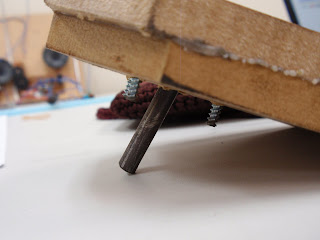
We're back to the crossing interaction idea where we have a box housing a microphone, speakers, and FM transmitters to let pedestrians waiting at crossings to communicate with each other almost anonymously while they wait. The idea is breaking the isolation felt within cities. Humans are social creatures, but when we're put in a crowd in a city it feels like you want to interact with people, but you're so trained in being suspicious of people in cities that you end up not doing anything with other people at all unless you personally know them.

I'm focusing more on making the box, since I'm the CAD person. I was thinking we can apply the mathematics of orgami into the design of our box. It would make it compact, easy to load and unload components, and convenient to transport. This is the goal. It gives a lot of room to explore design opportunities as well and lets us experience creating designs that are in touch with changing technology. This is because origami geometry is being applied more now in designs of airbags, telescopes, solar panels, even biology. So I think it would be interesting to try out origami geometry in our design.

For us, we'll probably need to do
rigid origami to apply to our design. This is where you have rigid materials such as wood, with hinges attached in specific locations to allow it to fold up to create a 3D form, become compact, etc like ordinary paper origami.
Examples of applied rigid origami:
http://www.origami-resource-center.com/origami-science.html
My favourite example is the eyeglass in a telescope. How when it's all folded up it's tiny, but it expands and flattens out into a far larger form.
Examples of built rigid origami pieces to show that it can work:
More examples of how bits can be made together to shrink and grow:
This one isn't exactly origami, but it shows some really interesting geometry:
A very VERY fine example of applied origami below. It's an entire room made of origami components for an architecture paper. This shows origami being applied in various fields.
Instructions for various tato boxes for me to try out and understand the geometry to make a wooden one:
http://www.origami-resource-center.com/tato.html
http://www.flickr.com/photos/melisande-origami/collections/72157600035377677/
James talked to us today and said that it's best not to hop from one idea to the next. It's better to stick with one favourite one and develop that fully instead of discarding it. I agree with that, that was probably our problem because we went all over the place with our ideas and didn't find anything that stuck. So in the end we went back to the interaction one explained at the top which we all liked.


































